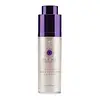What's inside
What's inside
 Key Ingredients
Key Ingredients

 Benefits
Benefits

 Concerns
Concerns

No concerns
 Ingredients Side-by-side
Ingredients Side-by-side

Water
Skin ConditioningCitrus Unshiu Peel Extract
MaskingMelia Azadirachta Leaf Extract
Skin ConditioningAlgae Extract
EmollientArtemisia Vulgaris Extract
Skin ConditioningCamellia Sinensis Leaf Extract
AntimicrobialSodium Ascorbyl Phosphate
AntioxidantArctostaphylos Uva Ursi Leaf Extract
Skin ConditioningDimethicone/Methicone Copolymer
Hexylresorcinol
AntimicrobialArbutin
AntioxidantAzelaic Acid
BufferingSucrose Palmitate
EmollientPueraria Tuberosa Leaf Cell Extract
AntioxidantChlorella Vulgaris Extract
Skin ConditioningHydrolyzed Corallina Officinalis
Skin ConditioningMorus Alba Leaf Extract
Skin ConditioningCentella Asiatica Extract
CleansingEchinacea Purpurea Extract
MoisturisingRumex Occidentalis Extract
Skin ConditioningPhyllanthus Emblica Fruit Extract
HumectantGlycyrrhiza Glabra Root Extract
BleachingAnthemis Nobilis Flower Extract
MaskingSalix Nigra Bark Extract
Skin ProtectingTocopheryl Acetate
AntioxidantMagnesium Ascorbyl Phosphate
AntioxidantDipotassium Glycyrrhizate
HumectantXanthan Gum
EmulsifyingPolysorbate 20
EmulsifyingPotassium Sorbate
PreservativeDisodium EDTA
Phenoxyethanol
PreservativeEthylhexylglycerin
Skin ConditioningCitric Acid
BufferingSodium Polystyrene Sulfonate
Emulsion StabilisingWater, Citrus Unshiu Peel Extract, Melia Azadirachta Leaf Extract, Algae Extract, Artemisia Vulgaris Extract, Camellia Sinensis Leaf Extract, Sodium Ascorbyl Phosphate, Arctostaphylos Uva Ursi Leaf Extract, Dimethicone/Methicone Copolymer, Hexylresorcinol, Arbutin, Azelaic Acid, Sucrose Palmitate, Pueraria Tuberosa Leaf Cell Extract, Chlorella Vulgaris Extract, Hydrolyzed Corallina Officinalis, Morus Alba Leaf Extract, Centella Asiatica Extract, Echinacea Purpurea Extract, Rumex Occidentalis Extract, Phyllanthus Emblica Fruit Extract, Glycyrrhiza Glabra Root Extract, Anthemis Nobilis Flower Extract, Salix Nigra Bark Extract, Tocopheryl Acetate, Magnesium Ascorbyl Phosphate, Dipotassium Glycyrrhizate, Xanthan Gum, Polysorbate 20, Potassium Sorbate, Disodium EDTA, Phenoxyethanol, Ethylhexylglycerin, Citric Acid, Sodium Polystyrene Sulfonate
Alternatives
Ingredients Explained
These ingredients are found in both products.
Ingredients higher up in an ingredient list are typically present in a larger amount.
Citric Acid is an alpha hydroxy acid (AHA) naturally found in citrus fruits like oranges, lemons, and limes.
Like other AHAs, citric acid can exfoliate skin by breaking down the bonds that hold dead skin cells together. This helps reveal smoother and brighter skin underneath.
However, this exfoliating effect only happens at high concentrations (20%) which can be hard to find in cosmetic products.
Due to this, citric acid is usually included in small amounts as a pH adjuster. This helps keep products slightly more acidic and compatible with skin's natural pH.
In skincare formulas, citric acid can:
While it can provide some skin benefits, research shows lactic acid and glycolic acid are generally more effective and less irritating exfoliants.
Most citric acid used in skincare today is made by fermenting sugars (usually from molasses). This synthetic version is identical to the natural citrus form but easier to stabilize and use in formulations.
Read more about some other popular AHA's here:
Learn more about Citric AcidDisodium EDTA plays a role in making products more stable by aiding other preservatives.
It is a chelating agent, meaning it neutralizes metal ions that may be found in a product.
Disodium EDTA is a salt of edetic acid and is found to be safe in cosmetic ingredients.
Learn more about Disodium EDTAPhenoxyethanol is a preservative that has germicide, antimicrobial, and aromatic properties. Studies show that phenoxyethanol can prevent microbial growth. By itself, it has a scent that is similar to that of a rose.
It's often used in formulations along with Caprylyl Glycol to preserve the shelf life of products.
Polysorbate 20 is made by combining ethoxylation of sorbitan, ethylene oxide, and lauric acid. It is a mild cleansing agent, surfactant, and emulsifier.
As a surfactant, it helps collect dirt and oils for washing. Emulsifiers prevent oils and water from separating.
Polysorbate 20 also adds scent to a product. Since it is made using sorbitol, it has a sweet scent. Sorbitol can also be found in fruits such as apples and peaches.
The lauric acid used to create Polysorbate 20 is often derived from coconuts.
Polysorbate 20 may not be fungal acne safe.
Learn more about Polysorbate 20Sodium Ascorbyl Phosphate is a form of Vitamin C. It is the salt of ascorbic acid.
This ingredient is more gentle than ascorbic acid. It is also more stable when exposed to light and oxygen.
Vitamin C helps reduce redness, improve skin texture, reduce the effects of aging, reduce the visibility of dark spots, and brighten skin.
Your skin uses Vitamin C to produce collagen and collagen production plays a role in having a strong skin barrier and plump skin. As an antioxidant, this ingredient also helps reduce the signs of aging such as fine-lines and wrinkles.
VItamin C helps brighten skin by blocking the process of skin darkening.
In a 2011 study, Sodium Ascorbyl Phosphate was found to have antibacterial properties. This may help treat acne.
Read more about other types of Vitamin C:
Learn more about Sodium Ascorbyl PhosphateTocopheryl Acetate is AKA Vitamin E. It is an antioxidant and protects your skin from free radicals. Free radicals damage the skin by breaking down collagen.
One study found using Tocopheryl Acetate with Vitamin C decreased the number of sunburned cells.
Tocopheryl Acetate is commonly found in both skincare and dietary supplements.
Learn more about Tocopheryl AcetateWater. It's the most common cosmetic ingredient of all. You'll usually see it at the top of ingredient lists, meaning that it makes up the largest part of the product.
So why is it so popular? Water most often acts as a solvent - this means that it helps dissolve other ingredients into the formulation.
You'll also recognize water as that liquid we all need to stay alive. If you see this, drink a glass of water. Stay hydrated!
Learn more about WaterXanthan gum is used as a stabilizer and thickener within cosmetic products. It helps give products a sticky, thick feeling - preventing them from being too runny.
On the technical side of things, xanthan gum is a polysaccharide - a combination consisting of multiple sugar molecules bonded together.
Xanthan gum is a pretty common and great ingredient. It is a natural, non-toxic, non-irritating ingredient that is also commonly used in food products.
Learn more about Xanthan Gum